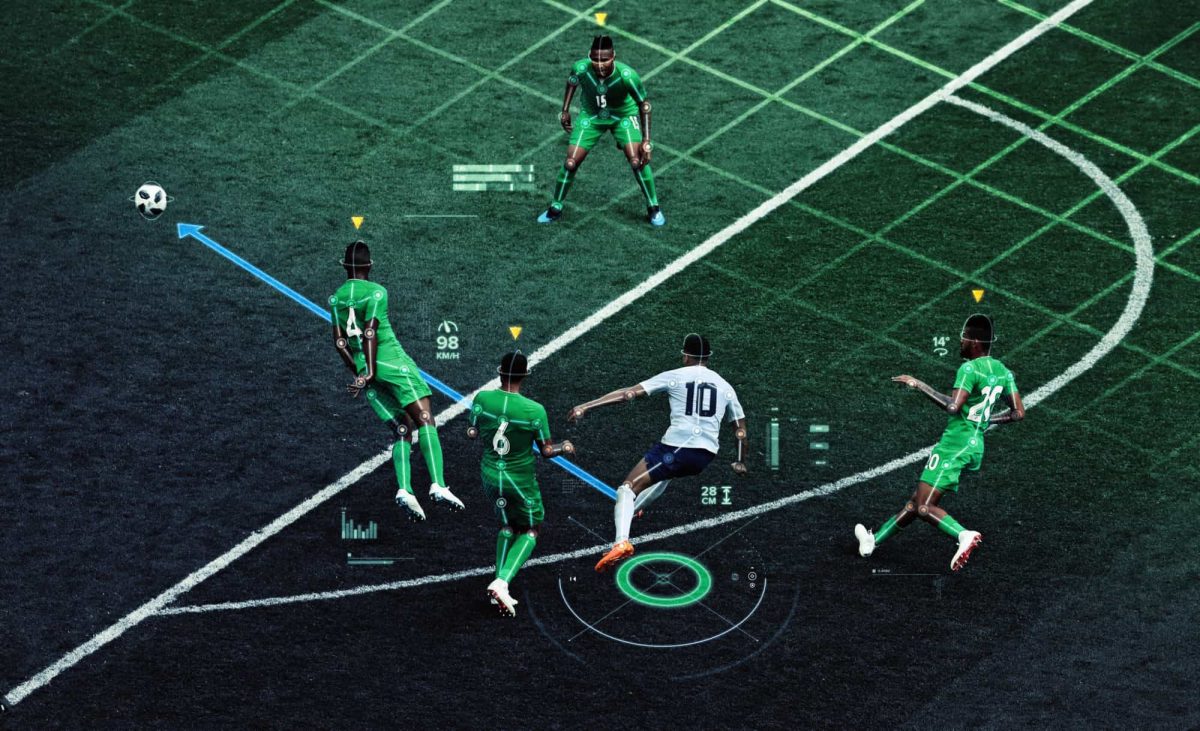Ruud van Elk, head of sports science and analytics at PSV soccer club indicates that about 31% of a football season is based on luck (ASML, 2022). The Dutch football club from Eindhoven has enlisted the help of multinational ASML to turn the large amounts of data collected during matches and training sessions into valuable insights. Because without humans involved, data are just some numbers (Hendriksen, 2017).
The way players accelerate, manoeuvre, shoot a ball and the time of play…everything influences how a match can be shaped to your liking as a club through data. The earlier quote shows that so about 69% of a season is not based on luck and so that is where we need to make the most of it as a club (ASML, 2022). Football is a massive industry and grew 10% last year to a €27.6 billion industry in Europe (Deloitte, 2022).
Where PSV has engaged ASML to assist them in Data Analytics, it is certainly no exception in Dutch football. Clubs like FC Groningen, Excelsior and AZ also mostly use data to analyse matches, training sessions and everything that happens around them. Further research shows that all clubs at the highest level in the Netherlands are now using data (Hendriksen, 2017).
However, the use of Data Analytics is not limited to within the Dutch borders. In the biggest football league in the world, the English Premier League, data analytics has been used for years to stay ahead of the competition. Top club Liverpool FC has an entire team of world-class scientists and statisticians at its disposal and Manchester United deploys AI models and machine learning to predict and shape the most accurate match analysis. The techniques are not only deployed before or after a match to make analyses. Even during matches, with real-time predictive analysis, players and opponents are analysed. Furthermore, in football, Sports Analytics goes beyond matches; in the areas of prediction, player nutrition, in-game situations, scouting and transfer policy, data have become indispensable (Hornstein, 2022).
In today’s football, we can say that Data Analytics are crucial and clubs that lag in this area will also weaken in league rankings. The BBC therefore aptly headlines; “Data experts are becoming football’s best signings” (Harper, 2021). However, football is still largely a game of luck and quality of players, with an increasing role in technological developments.
REFERENCES
ASML. (2022). ASML’s data analytics team helps improve soccer pitch performance. https://brainporteindhoven.com/nl/nieuws/asmls-data-analytics-team-helps-improve-soccer-pitch-performance
Deloitte. (2022). Annual Review of Football Finance 2022. https://www2.deloitte.com/uk/en/pages/sports-business-group/articles/annual-review-of-football-finance.html
Harper, J. (2021). Data experts are becoming football’s best signings. https://www.bbc.com/news/business-56164159
Hendriksen, R. (2017). Hoe eredivisieclubs gebruik maken van data. Tussendelinies.nl. https://www.tussendelinies.nl/datagebruik-eredivisie/
Hornstein, O. (2022). Premier League: How data has become a football game changer. UK Tech. https://www.uktech.news/big-data/premier-league-football-data-20220805


Great post and a very interesting topic. It is amazing to see that football clubs utilize analytics to predict games, tactics, and the development of the players. Technology has been quite helpful in improving team dynamics. Similarly, data analytics and technologies are also utilized to improve the fairness of the game itself. Since the introduction of the Video-Assistant-Referee (VAR) in 2018/2019, the number of fouls and red cards decreased. Probably, players are now more cautious as they know they can be constantly monitored. Also, total playing time increased on average by 30 to 120 seconds per game. However, the effective playing time decreased. This happens as the VAR increases the number of interruptions. In addition, it seems that referee bias towards big teams is still present (with referee bias we intend that referees usually concede more extra time at the end of the second half to bigger and stronger teams that are losing the game, in comparison with smaller ones). Overall, the introduction of VAR has not dramatically changed the dynamics of football games. However, I do think that, if developed, VAR could revolutionize refereeing.
As you mentioned, clubs make good data-driven decisions, and they seem to work. However, technologies such as VAR are still quite technologically behind, and can’t provide the benefits they should suppose to. Should the clubs contribute to the development of the VAR, as they are surely more advanced in terms of data management and decision-making?